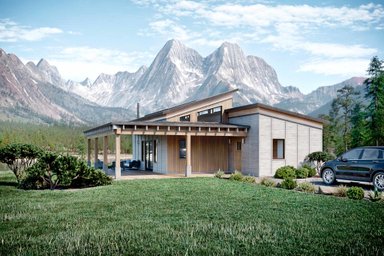It is said that, at long last, we are past “peak non-homeownership,” which is to say, the economic tide is finally turning and homeownership will soon be back to normal, particularly among young people. Certainly, the numbers bear out the fact that the economic turmoil of the past several years knocked many young people off their stride.
Census tracking of homeownership by age group shows that in 2012, 34.3 percent of 25-29 year olds owned homes. Among 30-34 year olds, it was 47.9 percent; for 35-39 year olds, it was 58.9 percent. These are weak numbers. They are the lowest percentages since 1982 for the 30-34 and 35-39 year old cohorts and the second lowest for the 25-29 year cohort. Over the last four decades, no time has been worse than the past five years for homeownership among young people just getting started in life.
Approximately 2.5 million households, plus or minus, are said to be “missing” due to a dramatic fall off in household formation following the financial crisis. Rather than setting up house for themselves, many young people moved back home or continued to rent instead of buying a house.
The woes of the economy in general hit young people harder. The hope, indeed, the expectation, is that they will come back strong to the housing market as the economy regains its stride. There is a lot of uncertainty yet in the numbers, but it is certainly true that a better economy will open doors for many young people. Even so, it won’t be business as usual.
Irrespective of any turnaround going forward, catching up with the recent past will present new challenges and opportunities. Young people in their twenties and thirties may finally turn the corner on getting started in life, but it will be a late start, and late starts are different.
The biggest difference with a late start is the opportunity if not the necessity to experiment with other ways of keeping house in the meantime. By not channeling themselves into a single-family suburban home right away, many young people have become ensconced in urban lifestyles that will keep them away from the suburbs forever. Not all young people have gone “missing” in this way, but enough to matter.
Additionally, the conversation about home has changed. Instead of taking it for granted that home is the cornerstone of the American Dream, young people have come of age in a time when pundits everywhere have declared all aspects of the traditional American Dream beyond their reach. Again, not all young people accept this but all young people have grown up with this as part of the conversation about their futures. In such a context, they can’t help but question the value and importance of home. (The very same thing is true about college education.) Some will go “missing” as a result.
Financially, a late start means a truncated timeline for building equity, trading up, renovating and cashing out, as well as, for some, buying a second home. If the timeline isn’t shortened, it’s reset with key milestones at later ages. At any given point in time, this means many homeowners will appear to be “missing” because they’re in the wrong part of the market for their age or lifestage.In practical terms, all of this means that housing needs will be far more diverse for the next generation than it has been for generations past. New kinds of units and new kinds of financing will be needed. The dominant trends in housing since the end of WW2 will continue to be very important, but divergent sub-trends will rise in importance, including multi-family housing, micro-units, multi-generational homes and more.
Economic struggles are not the only thing affecting the next generation. In fact, the biggest drivers of changing tastes for this generation are not about jobs or wages at all. Two long-term trends, both growing for many decades, have reached unprecedented levels with young people today. One of these is the age of first marriage. Young people today are not only marrying later, they are marrying at a record later age. Census data going back to the late 19th century show that young people today, both men and women, are marrying for the first time at the oldest average age ever tracked – in their very late twenties. The average age of first marriage has been rising ever since it bottomed out with Baby Boomers who married in their very early twenties.
The other of these two long-term trends is the age at which women have children. As with marriage, it is at a later age than ever. Births among women in their late thirties and early forties are on an upward trend and are occurring in record numbers.
What these two demographic trends mean is that young people are not facing the same lifestyle needs as prior generations. They are single and childless, so a home, while something they apprehend, is not meaningful to them as a place to raise a family. For now, more twenty-somethings than ever before can live without a home. They just don’t need it right now, and as they learn to live without a home, many will never come to see it as something that they really need and therefore must have.
Again, in practical terms, this means innovating what home means to many young people. Perhaps it is not a family domain but maybe it’s the new center of social connection. Maybe it’s a place built more for location than for size. Maybe it’s a technology hub. Maybe it’s built for working at home. Maybe it’s a center for continuing education. Maybe it’s a place to unplug from today’s flood of data and privacy threats. Maybe it’s disposable. Maybe it’s modular. Absolutely, it must be sustainable. Maybe, for a few, it’s just a huge video-gaming palace. Maybe for a few others, it’s nothing but a place to install a solar panel and sell power back to the grid. Who knows? But whatever it is, it will have to fit the new aspirations that come with the new demographics of life, today and tomorrow.
Nothing about the economy or demographics means that home will fall away as a central aspiration for young people on the come. Young people today are just as ambitious as young people have ever been. Home remains key to the American Dream. But young people are dreaming about home in new ways. Homebuilders building for the next generation must reimagine home in the context of new economics and demographics. The challenges of life today are unprecedented. But so, too, are the opportunities.
Speaking at this year’s SPARKS conference (part of PCBC), J. Walker Smith is Executive Chairman of The Futures Company, the leading global foresights and futures research consultancy, that is part of the Kantar Group of WPP, with a mission of “unlocking new sources of growth for clients.”
Census tracking of homeownership by age group shows that in 2012, 34.3 percent of 25-29 year olds owned homes. Among 30-34 year olds, it was 47.9 percent; for 35-39 year olds, it was 58.9 percent. These are weak numbers. They are the lowest percentages since 1982 for the 30-34 and 35-39 year old cohorts and the second lowest for the 25-29 year cohort. Over the last four decades, no time has been worse than the past five years for homeownership among young people just getting started in life.
Approximately 2.5 million households, plus or minus, are said to be “missing” due to a dramatic fall off in household formation following the financial crisis. Rather than setting up house for themselves, many young people moved back home or continued to rent instead of buying a house.
The woes of the economy in general hit young people harder. The hope, indeed, the expectation, is that they will come back strong to the housing market as the economy regains its stride. There is a lot of uncertainty yet in the numbers, but it is certainly true that a better economy will open doors for many young people. Even so, it won’t be business as usual.
Irrespective of any turnaround going forward, catching up with the recent past will present new challenges and opportunities. Young people in their twenties and thirties may finally turn the corner on getting started in life, but it will be a late start, and late starts are different.
The biggest difference with a late start is the opportunity if not the necessity to experiment with other ways of keeping house in the meantime. By not channeling themselves into a single-family suburban home right away, many young people have become ensconced in urban lifestyles that will keep them away from the suburbs forever. Not all young people have gone “missing” in this way, but enough to matter.
Additionally, the conversation about home has changed. Instead of taking it for granted that home is the cornerstone of the American Dream, young people have come of age in a time when pundits everywhere have declared all aspects of the traditional American Dream beyond their reach. Again, not all young people accept this but all young people have grown up with this as part of the conversation about their futures. In such a context, they can’t help but question the value and importance of home. (The very same thing is true about college education.) Some will go “missing” as a result.
Financially, a late start means a truncated timeline for building equity, trading up, renovating and cashing out, as well as, for some, buying a second home. If the timeline isn’t shortened, it’s reset with key milestones at later ages. At any given point in time, this means many homeowners will appear to be “missing” because they’re in the wrong part of the market for their age or lifestage.In practical terms, all of this means that housing needs will be far more diverse for the next generation than it has been for generations past. New kinds of units and new kinds of financing will be needed. The dominant trends in housing since the end of WW2 will continue to be very important, but divergent sub-trends will rise in importance, including multi-family housing, micro-units, multi-generational homes and more.
Economic struggles are not the only thing affecting the next generation. In fact, the biggest drivers of changing tastes for this generation are not about jobs or wages at all. Two long-term trends, both growing for many decades, have reached unprecedented levels with young people today. One of these is the age of first marriage. Young people today are not only marrying later, they are marrying at a record later age. Census data going back to the late 19th century show that young people today, both men and women, are marrying for the first time at the oldest average age ever tracked – in their very late twenties. The average age of first marriage has been rising ever since it bottomed out with Baby Boomers who married in their very early twenties.
The other of these two long-term trends is the age at which women have children. As with marriage, it is at a later age than ever. Births among women in their late thirties and early forties are on an upward trend and are occurring in record numbers.
What these two demographic trends mean is that young people are not facing the same lifestyle needs as prior generations. They are single and childless, so a home, while something they apprehend, is not meaningful to them as a place to raise a family. For now, more twenty-somethings than ever before can live without a home. They just don’t need it right now, and as they learn to live without a home, many will never come to see it as something that they really need and therefore must have.
Again, in practical terms, this means innovating what home means to many young people. Perhaps it is not a family domain but maybe it’s the new center of social connection. Maybe it’s a place built more for location than for size. Maybe it’s a technology hub. Maybe it’s built for working at home. Maybe it’s a center for continuing education. Maybe it’s a place to unplug from today’s flood of data and privacy threats. Maybe it’s disposable. Maybe it’s modular. Absolutely, it must be sustainable. Maybe, for a few, it’s just a huge video-gaming palace. Maybe for a few others, it’s nothing but a place to install a solar panel and sell power back to the grid. Who knows? But whatever it is, it will have to fit the new aspirations that come with the new demographics of life, today and tomorrow.
Nothing about the economy or demographics means that home will fall away as a central aspiration for young people on the come. Young people today are just as ambitious as young people have ever been. Home remains key to the American Dream. But young people are dreaming about home in new ways. Homebuilders building for the next generation must reimagine home in the context of new economics and demographics. The challenges of life today are unprecedented. But so, too, are the opportunities.
Speaking at this year’s SPARKS conference (part of PCBC), J. Walker Smith is Executive Chairman of The Futures Company, the leading global foresights and futures research consultancy, that is part of the Kantar Group of WPP, with a mission of “unlocking new sources of growth for clients.”






